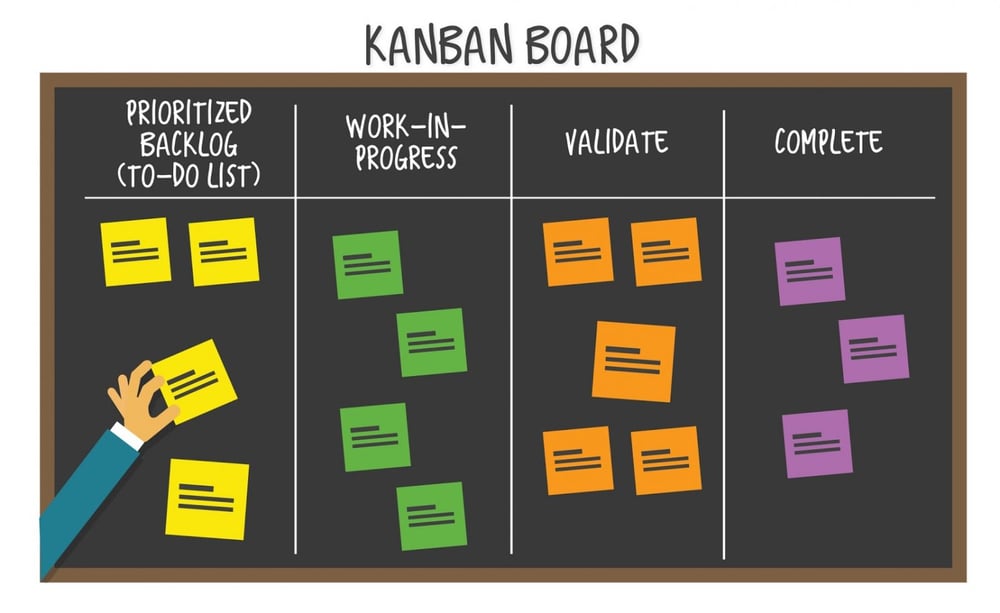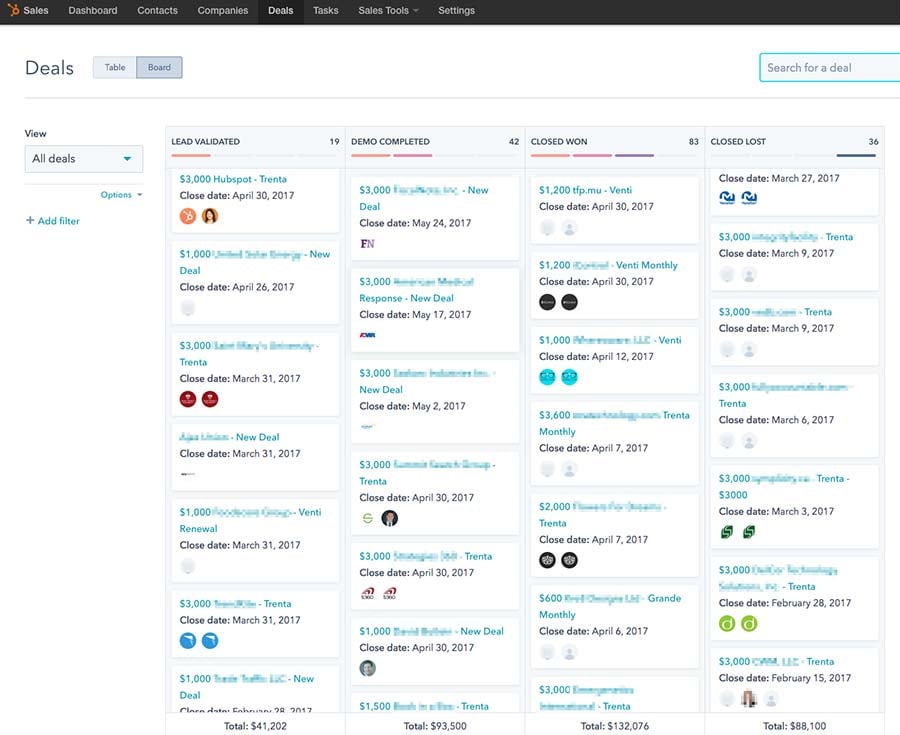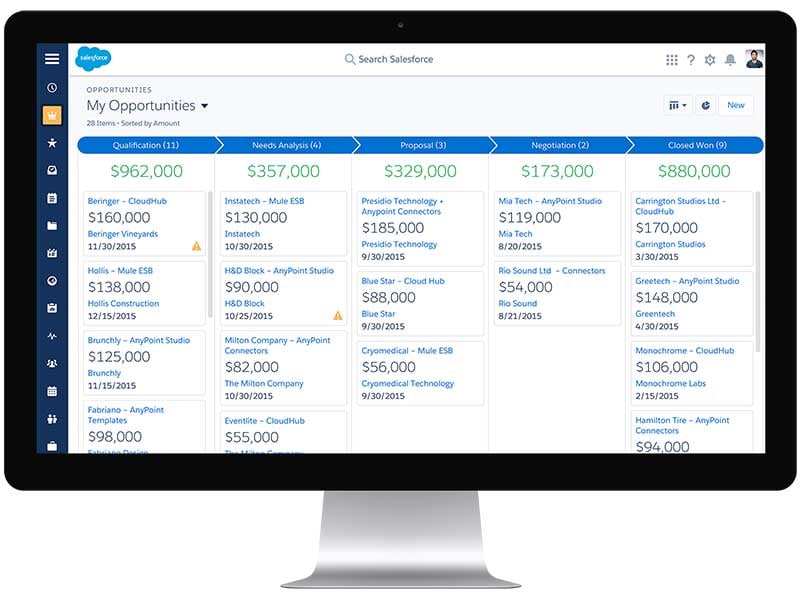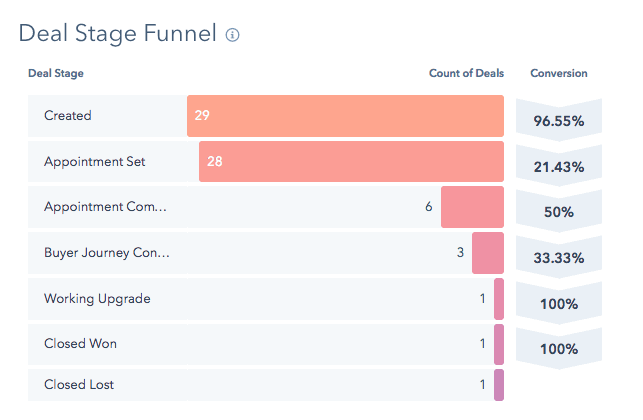A strong sales pipeline is customised to your company's sales process, but it will still follow a universal core structure. A deal in the sales pipeline is moved from stage to stage in the sales process until it either falls off the pipeline (Lost Deal) or is closed (Won Deal) and becomes a customer.
Related:
- B2B Sales: Build a B2B strategy to generate better leads
- 12 Reasons Bad Sales Qualification Is Crippling Your Quota
- 5 Common Reasons Your Sales Conversations Get Derailed
Before we start...
Are you using a CRM to manage your sales pipelines? Or are you using a spreadsheet?
Either way, this article will help you structure your sales process. But to get the most out of this article - you should have a CRM in place. If you don't, HubSpot has a great free CRM. We highly recommend it.
Modern CRMs display the sales pipeline in a visual representation for you and your sales team. Technically this visualisation method is called a Kanban board. Kanban boards visually depict work at various stages of a process using cards to represent work items and columns to represent each stage of the process.

Translating this process to the sales process, it becomes easy to see which stage each deal (card) is in your pipeline. This means sales reps or sales leaders can quickly evaluate their entire pipeline in a single glance.
Below is an example of one of our client's pipelines. They sell financial software.
This client only has four stages in their pipeline. But it works really well for them. Sales are fast-paced, and decisions are made quickly.
Leads Validated > Demo Completed > Closed Won > Closed Lost

A clear pipeline allows salespeople and sales managers to create a realistic sales forecast. Notice the deal totals at the bottom of each stage.
Clear sales pipelines and sales pipeline stages enable your sales team to see how many opportunities are pending, closing probabilities, forecast revenue, and how many of those deals might close in a given timeframe.
Pipeline flexibility
Not all opportunities will move through every one of your sales pipeline stages.
For example, referrals tend to jump a couple of pipeline stages because they enter the pipeline pre-qualified. They don’t need to go through the Prospecting stage because they have proactively sought your company out. They can move directly to the Qualifying Leads stage.
Opportunities in sales pipelines will all have a range of interest, urgency, and awareness about your company, products or services. A flexible point of entry into your pipeline is a must.
4 Steps to building a strong sales pipeline
Step 1: Define the stages of your sales pipeline
The stages of your sales pipeline (also called your sales cycle) will depend on multiple factors, including your business model, sales strategy, sales process and your products and services.
Some businesses might have a sales pipeline for each department, some might have a sales pipeline for each product or service, and for some businesses, just a single pipeline for the entire businesses sales cycle is adequate.

Image source: Salesforce.com
The most common stages of a sales pipeline include:
Sales Prospects > Connect > Qualify Leads > Present Offer > Closed Won > Closed Lost
But it can also look like this:
Prospect > Connect > Appointment > Qualify Leads > Product Demo > Solution Design > Present Offer > Closed Won > Closed Lost
Or this (This is our own ‘New business’ pipeline),
Prospecting > Appointment Scheduled > Needs Analysis > Sales Qualified Leads > Presentation Schedules > Decision Maker Bought In > Quotation Presented > Signaled Intent to Sign > Closed Won > Closed Lost
Your pipeline needs to reflect your sales process’s unique requirements.
Step 2: Figure out your sales funnel metrics
Figure out how many opportunities move to the next pipeline stage. If you have 100 opportunities in ‘Prospecting’, how many typically move onto a ‘Connect call’? 30%?
 Image source: HubSpot.com
Image source: HubSpot.com
Not every opportunity will move to the next sales pipeline stage. Some opportunities are simply not a great fit. Some may not have the required budget, and some might only want to purchase next year.
Working backwards, calculate the number of opportunities needed at every stage of your pipeline to hit your revenue goals.
You need to establish a clear baseline of how many opportunities generally move from one sales funnel stage to the next. This analysis will give you a solid idea of how many opportunities you need to target in each stage to hit your revenue number.
If you generally close 1 in 10 opportunities, and your monthly sales target is 5 deals per month. You must have at least 50 new opportunities enter your pipeline every month to hit your sales targets of 5 closed won deals. This calculation is crucial for accurate sales pipeline management.
Step 3: Look for patterns of success
Analyse the commonalities that convert opportunities from stage to stage in your pipeline. Are there common triggers like a demo or a particular follow-up email?
(For the people using spreadsheets, you can't do this... Sign up for HubSpot CRM!)
If you can understand these metrics, you can start to understand what makes your opportunities convert.
Having a defined process enables you to see the patterns, and if you can see the patterns, you can improve the process to optimise ROI on your sales efforts.
Step 4: Evolve your sales process
Create a sales process or adapt your existing one around these new numbers and patterns of success. Now that you have data-driven information in your hands, it’s time to create a rock-solid sales pipeline.
Just remember that the best sales processes are ones that can evolve over time and adapt to the demands of the business, sales team and particular industry.
By keeping your eye on the numbers and breaking your sales cycle up into stages in your sales pipeline - you can constantly monitor the success of each stage and have the ability to tweak your sales process and sales cycle length consistently.
Final thoughts
We're always surprised to see how many companies manage their sales process on multiple spreadsheets. Some of these companies run highly profitable sales teams - imagine what their performance could be if they could dig into and remove the bottlenecks in their sales process.
Have you got a sales team or process that you’d like to optimise? Give us a call. We love sharing our thoughts.





